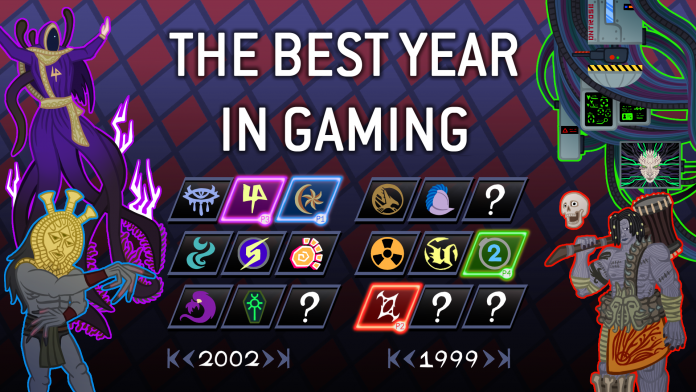Last year’s stacked lineup of games for the Game Awards had us thinking: What was the best year in gaming? As part of our series on determining gaming’s best year, we’re putting together an article on each year, charting the major releases and developments of the year, and talking about both their impact and what made them great.

The Year: 1987
Get ready for a big one, both on the tabletop and in video games. Nintendo hit the US proper in 1986 and by 1987 the US video game market was truly back, with Nintendo firmly in control.
Nintendo Crushes Everyone at Home
The NES finally hit the United States in earnest in 1986; in ‘87 it lapped the competition and never looked back. The NES sold a reported three million units in the US in 1987 and some of those top titles we talked about last year – most notably The Legend of Zelda – hit in August 1987 with an updated, battery-backup save feature version. But as we’ll see, there were a few games which hit the US around the same time as their Japanese counterparts, and some of these are among the greatest games ever made.
Sega Dominates Arcades
While Nintendo sold nearly six times the number of consoles as Sega in the US in 1987, Sega absolutely dominated arcades. 1986’s Out Run was the biggest arcade game of the year but it had some fantastic competition in the form of After Burner and Shinobi. The Master System had its share of solid releases, but behind closed doors Sega was already working on the successor to its Master System, hoping to beat Nintendo to the market by kick-starting the next generation of consoles with a 16-bit release. They’d ultimately lose that race…but only kind of, and beating Nintendo was by far the more important part.
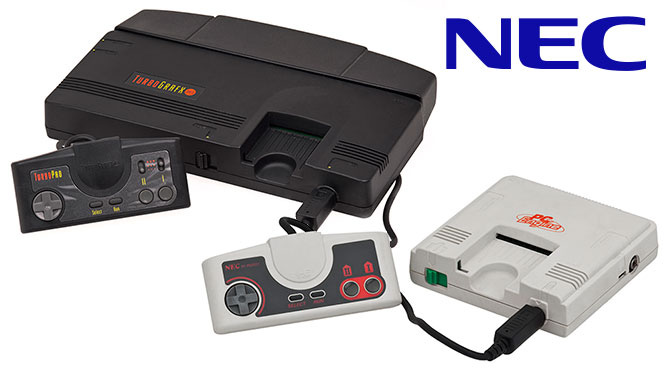
The PC Engine Makes its Debut
There’s always been a question about whether the gaming market can support three major home consoles and until the Nintendo Wii captured an entirely new audience in 2006, the answer was a resounding “no.” The PC Engine was released in Japan in 1987 and would later go on to be released in the US as the Turbografx-16 in 1989. The PC Engine kicked off the 16-bit era of gaming and was pretty successful in Japan, where it was fairly competitive with Nintendo early on and would occupy second place in market share even well after the launch of Sega’s Mega Drive. As a console, it was incredibly powerful – more so than the Genesis even – and engineered by Hudson Soft, who were also responsible for a bulk of the console’s library. The console would eventually get a solid library of games, but in ‘87 the pickings were pretty slim.
Sports Games Hit Big
1987 was the year sports games really came into their own, often with releases in the US much closer to or even preceding Japanese release. While RBI Baseball on the NES had done well a year prior, instant classics like Blades of Steel, Tecmo Bowl, Super Dodge Ball, Bases Loaded, and Mike Tyson’s Punch-Out!! really made a splash. These titles are also notable for kicking off a new trend: Games releasing in the US before Japan, or close to it.
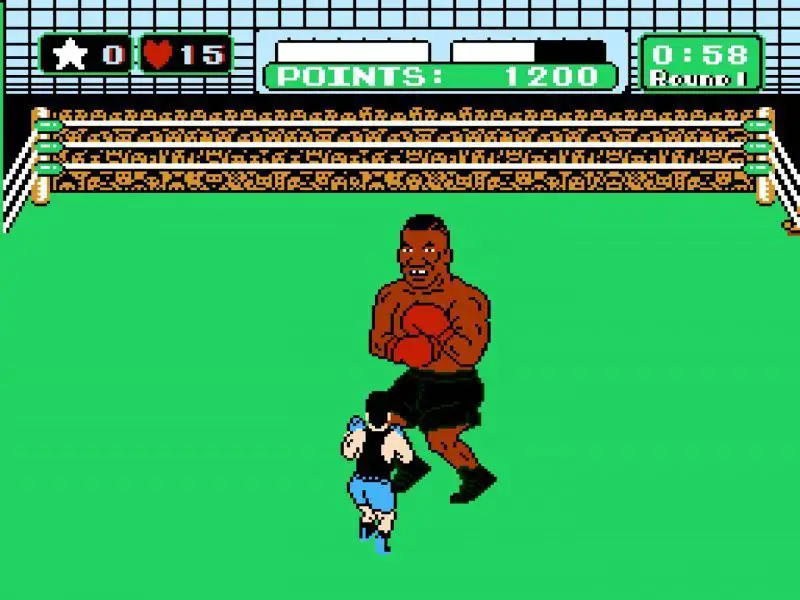
Mike Tyson’s Punch-Out!!
This one’s an all-timer. Nintendo ported elements of its arcade games to the NES, pitting players against big, colorful opponents with obvious tells. Oh, and one of them – the final boss – happened to be Mike Tyson, who at the time hadn’t yet won the WBC heavyweight championship. The game was released worldwide in 1987 and was an immediate, massive hit, selling more than two million copies in 1988. To this day it’s a fantastic game and still somehow the best game in the Punch-Out!! Series, though the SNES version of Super Punch-Out!! is pretty close.
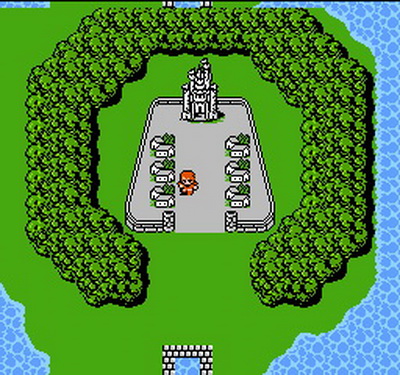
Final Fantasy
Video game franchises don’t get more august than this – the original Final Fantasy launched in 1987 on the Famicom and had players build a party of four Warriors of Light, chosen from six different classes, then take them around a fantasy world in search of four crystals needed to defeat a great evil threatening the world. The game featured an overworld map full of towns and NPCs to speak with and eschewed the Wizardry-inspired first-person view in its menu-based combat for a side view showing monsters and the player’s party. The original Final Fantasy is still a solid game and played a massive role in both popularizing RPGs and also elevating Squaresoft to a position in gaming’s upper echelon. It’s still considered one of the best games on the NES.
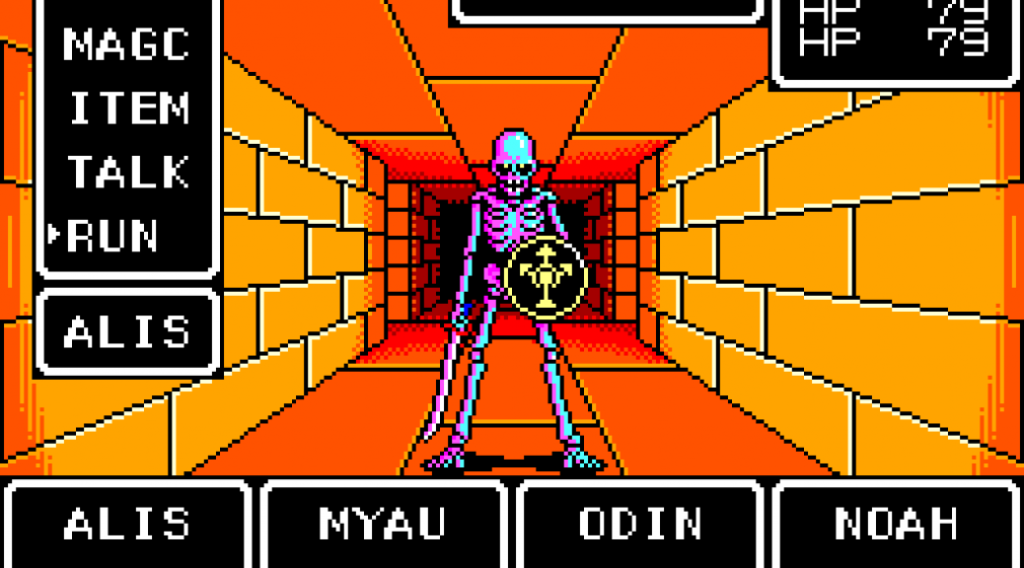
Phantasy Star
One of the Master System’s stand-out titles and Sega’s answer to Dragon Quest, Phantasy Star was another major milestone for JRPGs, giving players a much more sci-fi aesthetic and a party of characters similar to Final Fantasy – though still featuring first-person combat similar to Wizardry and Dragon Quest. And while Phantasy Star had top-down overworld maps and towns, it had 3d dungeon exploration similar to older PC RPGs from the west at the time. In the US Phantasy Star was far overshadowed by Squaresoft’s Final Fantasy, in major part because the NES just sold so much better than the Master System. Where the game made a much bigger splash was in Europe: Phantasy Star was released in the west a year later, but Final Fantasy was never released in the PAL region.
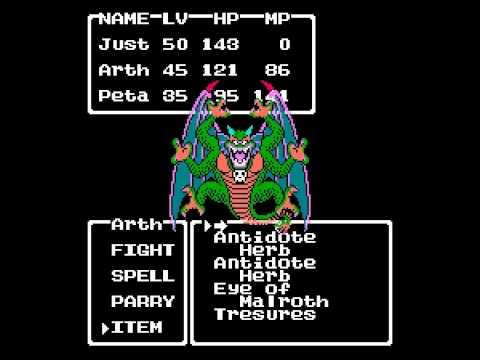
Dragon Quest II
1987 was a big year for JRPGs. Enix released the follow up to its original Dragon Quest less than a year later, in January 1987. This time around players aren’t just flying solo – they have access to a party of three characters as they travel the globe looking for ways to take down the wizard Hargon. Set about a hundred years after the original game, Dragon Quest II featured a much more involved story with more characters, more NPC interaction and a much larger world map.
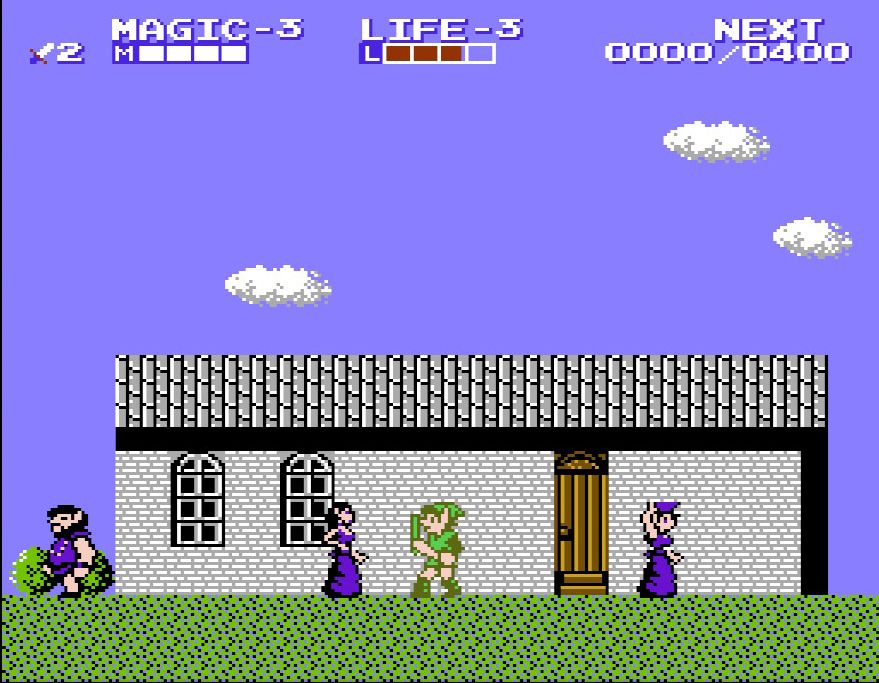
Zelda II: The Adventure of Link
Just to drive home how stacked a year it was for RPG releases, let’s add Zelda II onto the pile. While much less beloved than its predecessor and follower, Zelda II was unafraid of shaking things up and adding RPG elements and side-scrolling platforming to its top-down world. The result was a game that had much more depth than its predecessor and much more interaction – the world of Hyrule is dotted with towns and characters – but whose dungeon design suffered from having to be much more linear. It’s still a solid game and a cool reminder of when Zelda devs were a bit more adventurous.
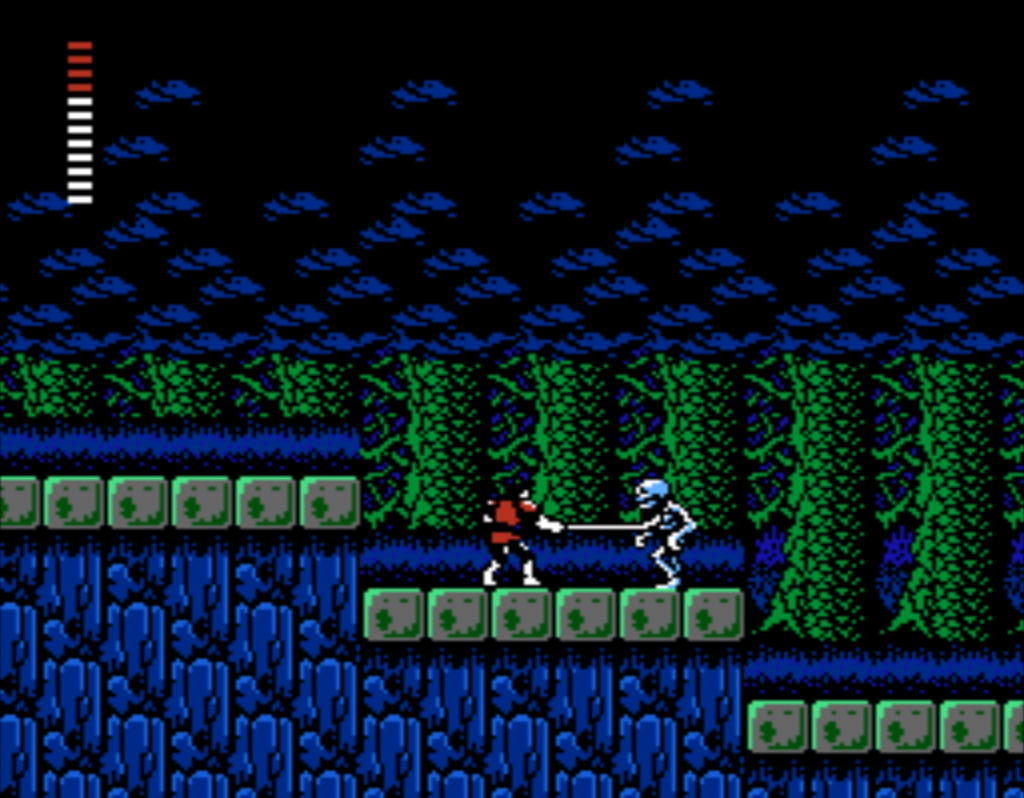
Castlevania II: Simon’s Quest
Not to be outdone in the realm of “adding RPG mechanics to your game and giving it a horrible translation,” Castlevania followed the same path as Zelda with its sequel, turning the action game into more of an adventure game/rpg. In Castlevania II: Simon’s Quest, players traveled the land as Simon Belmont, assembling the pieces of Dracula to revive the vampire to destroy him again and end the curse plaguing Belmont. The game has many of the original’s combat mechanics but with a more open world, towns, money, and NPCs who will just straight up lie to you. The game isn’t amazing, but it’s an important stepping stone for the series and it’s still pretty fun once you are aware of some of its translation issues.

Metal Gear
The first – but certainly not the last – of the games from Hideo Kojima that will pop up in this article series, Metal Gear introduced players to the notion of a stealth game. Players take on the role of Solid Snake as he infiltrates a terrorist base housing an experimental weapon called Metal Gear. Metal Gear combined stealth gameplay with puzzles, forcing players to think on their feet as they delved deeper into the base to take on their former mentor, Big Boss. The first Metal Gear title is one of those games which is more important for its legacy than its actual gameplay but it’s still a fun play and was absolutely groundbreaking upon release in 1987.

Mega Man (Rockman)
Capcom had not one but two brushes with greatness in 1987. The first – and by far more initially successful – was Rockman (Mega Man in the US), a 2d action game in which players took on the role of a blue robot named Mega Man as he took down six evil robots under the command of Dr. Wily. In addition to each robot having its own themed stage, Mega Man gained the weapons of his defeated foes and could use them to take out other bosses. The game was particularly notable for its great art and bright, expressive sprites, though Capcom would really perfect the formula a year later in Rockman 2. Still, the original Rockman is a great game, if a bit jankier and less sure of itself than its sequel. It’s also got a pretty stellar soundtrack.
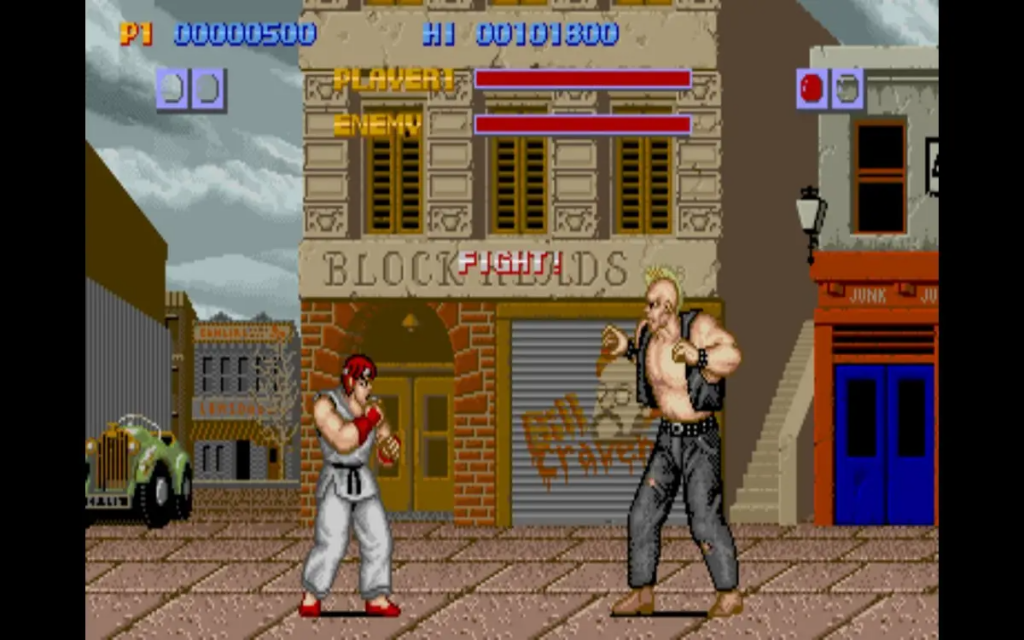
Street Fighter
Let’s be clear: The original Street Fighter was incredibly innovative for its time, but it wasn’t all that great a game. You can play it, and it was reasonably fun if you played against a human opponent and not an AI. It does a lot of things – such as special moves triggered by unique, hidden inputs – that would later go on to be staples of the genre, and it’s one of the most important games ever made. The game was much less successful in arcades than you might think, in part because cabinets shipped with a big stupid punch and kick buttons that were pressure sensitive for determining whether your character did light/medium/heavy attacks.
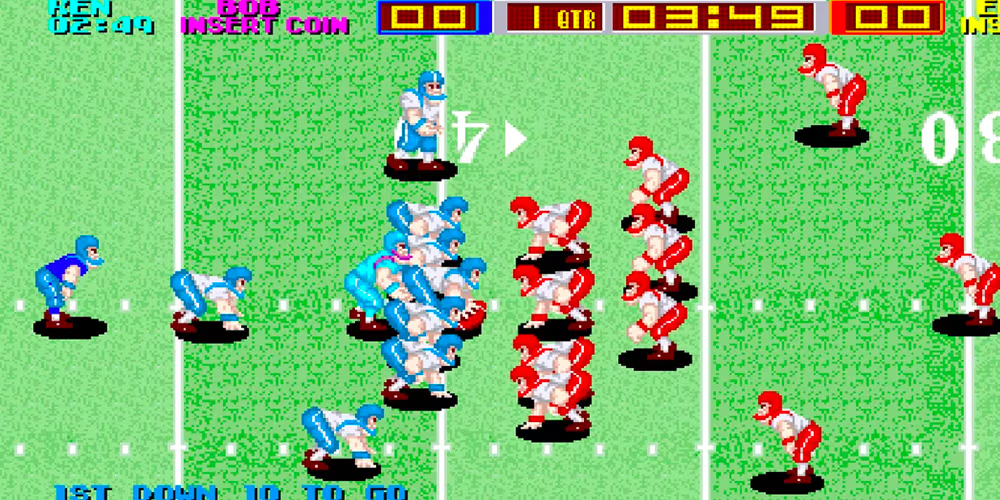
Tecmo Bowl
Tecmo Bowl made its arcade debut worldwide in 1987. It’s not at all the game fans would come to love on the NES three years later – it has much better graphics, puts 10 players on the field per team, and doesn’t have the insane bullshit of Bo Jackson – but the basics are all here in a game that’s pretty fun to play, especially thanks to having a two-screen cabinet and four-player support. The mechanical basics are all there, and honestly not having Bo Jackson makes it a much more fun and balanced game to play for two or four players.
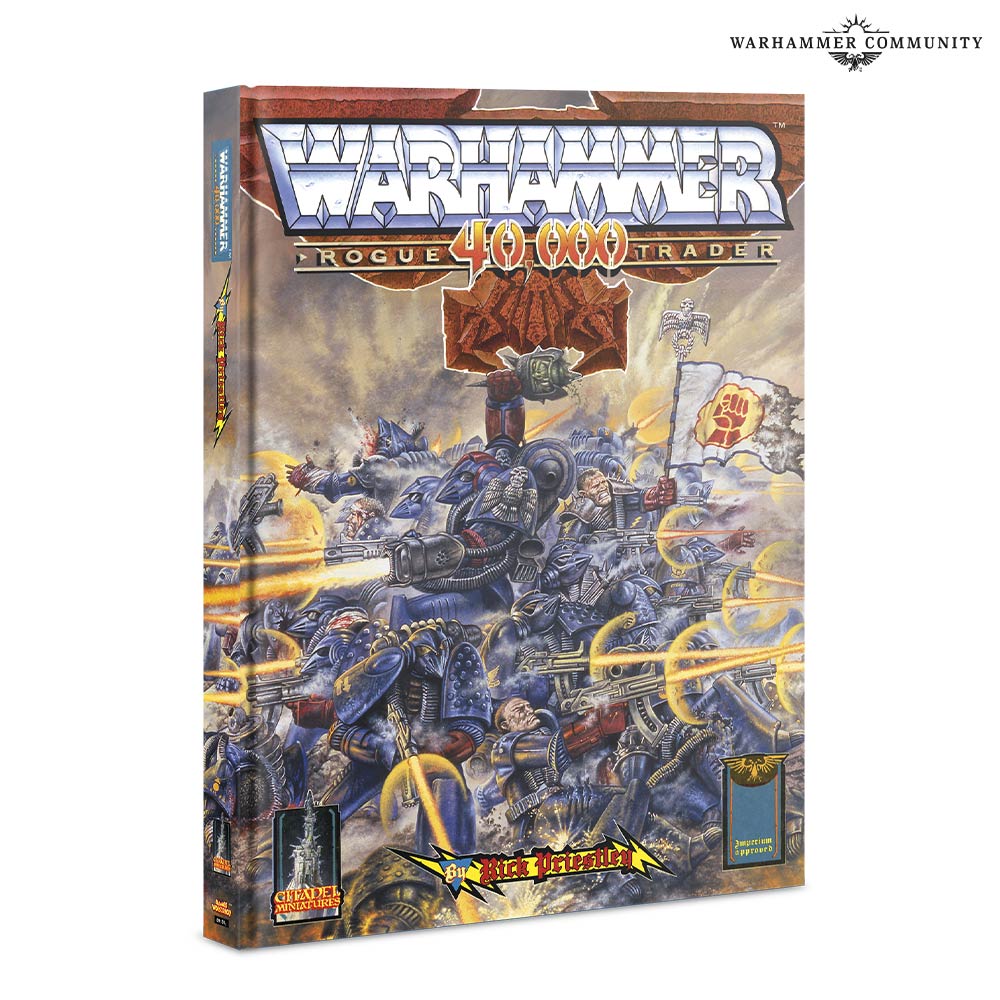
Warhammer 40,000: Rogue Trader
Oh hey, it’s the reason this site exists. In 1987 Games Workshop decided to branch out into the science fiction side of things, releasing the first edition of what would later just become Warhammer 40,000. In this first edition of the game players take on the role of a Rogue Trader exploring the fringes of Imperial space with a small private army of their own construction, clashing with enemy forces over resources. This version of the game had a lot of d100 tables and required a GM to play, making it look a lot more like 2001’s Inquisitor. Still, there are a number of cool ideas here and some incredible lore which would give birth to the most popular tabletop wargame in the world.
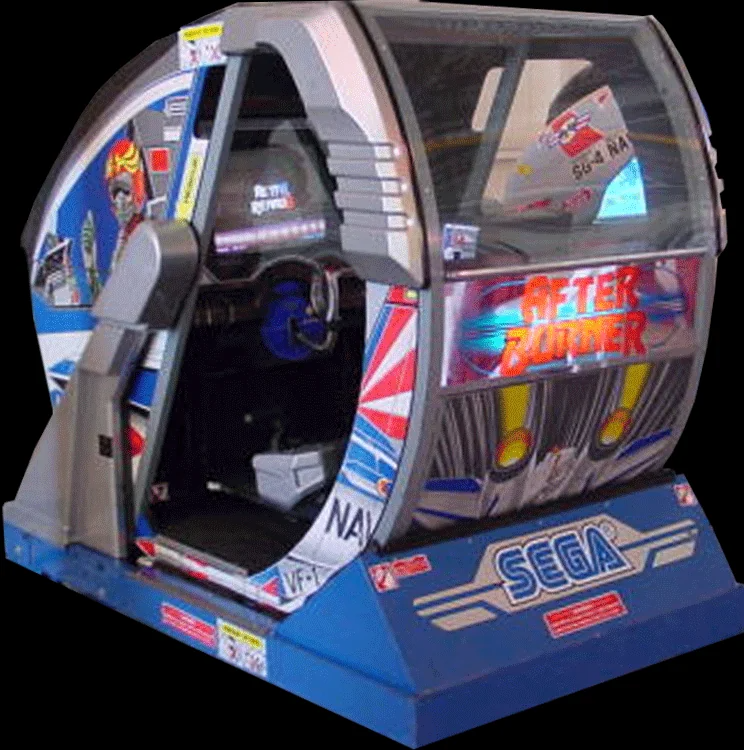
After Burner
We’ve already mentioned it but it bears a second look – Sega released After Burner in 1987, letting players sit in the cockpit of a US F-14 fighter jet in a game that was absolutely inspired by/capitalizing on the success of the prior year’s Top Gun. The most notable feature of After Burner is its iconic, custom-made arcade cabinet, which features a full-motion cockpit where the seat can tilt forward and backward and rock side-to-side in-sync with the plane’s movement on screen. It’s one of the most iconic, immersive arcade cabinets ever built and was a huge contributor to the game’s success as it became the top-selling arcade game of 1987 and 1988. Even today it’s still impressive.

Auf Achse
This is the game which won the Spiel des Jahres in 1987. From our writeup on the game for our last March Madness article:
Most hobby gamers outside of Europe know Wolfgang Kramer for his work on heavier titles like the masterpiece El Grande and the seminal Princes of Florence. But he’s also done quite a few family weight games and some of them have been excellent. One of these is 1987 SDJ winner Auf Acshe, a charming and hopelessly outdated game set in the oddly underused world of big rig trucking.
With a title translating to “on the road”, Auf Achse is a classic pick up and deliver design that to date has not been published in English despite enjoying enough popularity in its native Germany to warrant a card game, a kids edition and a 2007 reprint with some modernization.
But you probably won’t need to because Auf Achse is a clean, supremely focused design. It’s a roll and move with random event cards, and that is likely enough to make many modern gamers hit the brakes right there. But keep on truckin’ and you’ll find moving the little plastic trucks around the map to make their deliveries delightful; the simple friction of bidding for delivery contracts (weighing in the cost of your bid versus the potential revenue) and working them into a profitable route is satisfying in a concrete way. Along the way, you might hit traffic or a road closure but getting outbid for a choice contract is a greater setback.
You don’t have to squint too hard to see a chain of influence connecting Auf Achse to 2004 SDJ winner Ticket to Ride, particularly in the player-driven decisions around investing in route cards versus the potential of loss if you can’t make the connections. Like Alan Moon’s perennial favorite, Auf Achse offers a refined, accessible design that never strays from just a couple of core mechanisms. Compared to the ponderously rococo designs of today, it may even be considered quaintly refreshing.
Special thanks to Michael Barnes of ThereWillbe.Games for contributing the Auf Achse writeup.
Why It Was the Best Year in Gaming
As strong a claim as 1986 had, I think 87 beats it pretty handily. There were just so many very good, classic games released in ‘87, and whether you were a sports fan or an RPG fan, you had some incredibly solid picks to choose from. In arcades we had some amazing contributions even outside of Sega – Double Dragon, Contra, and R-Type were all incredible additions on top of the aforementioned sports games.
The year was no slouch when it came to the tabletop either, with Auf Achse, Warhammer 40,000’s first edition, and the Illuminati board game were all solid games to play and while I’m not a particularly big fan of Rogue Trader, I appreciate a lot of what it was trying to do and the original’s punk aesthetic. It’s certainly in good company as one of the most important games ever made.
This article is part of a larger series on the best year in gaming. For more years, click this link. Have any questions or feedback? Drop us a note in the comments below or email us at contact@goonhammer.com.
